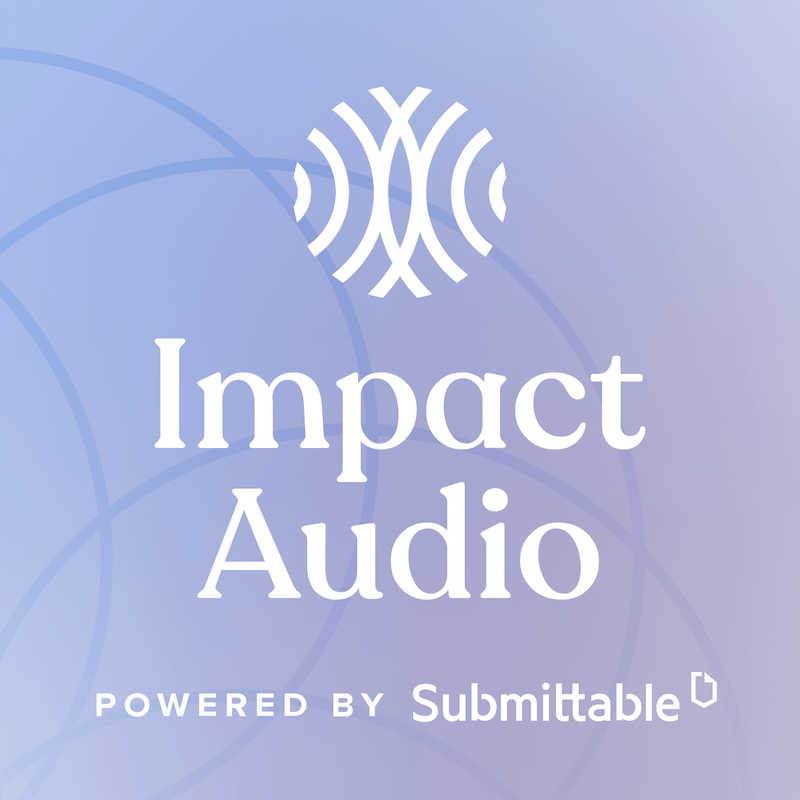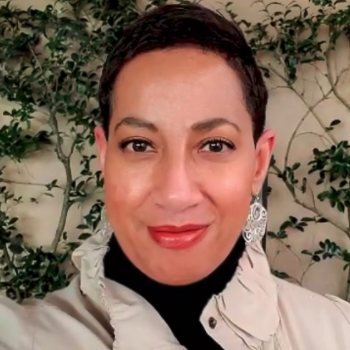< Back to all episodes
Amy Sample Ward and Afua Bruce
How Tech Can Turn Silos Into Systems Change
In this episode of Impact Audio, you’ll hear from Amy Sample Ward and Afua Bruce, co-authors of an important new book: "The Tech That Comes Next."

How Tech Can Turn Silos Into Systems Change
Join Impact Audio for a conversation with Amy Sample Ward and Afua Bruce, experts and leaders in social impact technology.
Description:
Any conversation about technology should also be a conversation about community. Too often in philanthropy, discussions and decisions related to tech happen in ways that perpetuate inequity and impede social progress. Fortunately, there is a way forward.
Amy Sample Ward and Afua Bruce are tech leaders with compelling alternatives to offer. Their new book, The Tech That Comes Next, is focused on how to bring social impact organizations, funders, policy makers, technologists, and communities together through technology to promote lasting change.
In this episode, you'll learn:
Why we’re all technologists now
How tech builds relationships across the social impact sector
What technology decisions during the pandemic can teach us
How to foster collaboration and break down silos
Why a stroll might be better than a sprint
Drawn for a recent Submittable webinar with Amy and Afua, this audio conversation will serve professionals across the social impact sector, from nonprofits to funders, looking to center community in their tech strategy.
Guests:

Amy Sample Ward
Amy Sample Ward is driven by a belief that the nonprofit technology community can be a movement-based force for positive change. They are the CEO of NTEN, a nonprofit creating a world where missions and movements are more successful through the skillful and equitable use of technology. Amy also serves as chair of the Portland Elections Commission, a board member for The Cottonwood School of Civics and Science, a Steering Committee member for Invest in Open Infrastructure, and a formal and informal advisor to a number of nonprofit, technology, and digital inclusion initiatives.

Afua Bruce
Afua Bruce is a leading public interest technologist who has spent her career working at the intersection of technology, policy, and society. Her career has spanned the government, non-profit, private, and academic sectors, as she has held senior science and technology positions at DataKind, the White House, the FBI, and IBM. As an AAAS If/Then Ambassador, Afua engages in a number of outreach activities to expose girls to STEM concepts and careers. Afua has a bachelor’s degree in computer engineering, as well as an MBA. She is also a Technology and Public Purpose fellow at the Harvard Kennedy School’s Belfer Center.
Transcript:
Episode Notes
Learn more:
Get your copy of The Tech That Comes Next
Watch the webinar: What Comes Next: How Tech Fits into Your Social Impact Strategy
Find out about the work of NTEN
Interested in more quality content focused on leveraging technology for positive change? Here are a few Submittable resources:
Improve Equity with #FixTheForm (Webinar)
9 Ways Data Science Can Accelerate Your Social Impact Work (Blog)
Measuring Social Impact: A Guide for Grantmakers and CSR Professionals (Guide)
The Review (Bi-monthly newsletter by Sam Caplan)
Transcript
Welcome to Submittable’s Impact Audio. I’m Rachel Mindell. Impact Audio is the podcast featuring educated guests making educated guesses about where philanthropy is headed next.
This episode is drawn from a webinar Submittable hosted with the authors of an important new book: The Tech That Comes Next, released in March of 2022. Today you’ll hear from Amy Sample Ward, the CEO of NTEN, and Afua Bruce, an expert in tech, strategy, government, and NGOs.
Amy and Afua are true tech leaders with deep training. I encourage you to peruse their full bios on the web page for this episode.
Laura Steele from Submittable talked with Amy and Afua about the book and about tactics for building community through technology. Here’s Amy, followed by Afua, introducing their focus for the book.
AMY: So the book is called The Tech That Comes Next.
And really what we are here to talk about is technology. We will be saying the word technology a lot but what we are really trying to talk about is community. That is underneath and around and in the middle of all of the topics that are in the book and that we want to talk about today.
AFUA: So when we think about how technology works today and sort of how the social impact sector works today we recognize that there's a lot of activity. But the activity doesn't necessarily serve everyone or serve everyone equitably. So when we look at how we're set up today, you see a lot of silos. You see a lot of information stored in one place or maybe hoarded in one place or among certain groups of people and not distributed.
You have technology that doesn't recognize all genders or all races or people with all different types of abilities. So technology today and sort of the world that we're set up in today, while perhaps created around some lofty goals that inclusive world does not exist today.
At this point, Amy and Afua shared some framework behind the book. The Tech That Comes Next focuses on five groups—social impact organizations, funders, policy makers, technologists, and communities—as well as six guiding values aimed at prioritizing lived experience, improving equity, leading with accessibility, and building for the future as a collective. Please note: this is a very quick summary of complex ideas. Do check out the book and webinar for a fuller understanding. After their intro, Laura asked how Afua and Amy recommend approaching conversations and decisions regarding technology.
AFUA: So I think that there are a number of ways people can go about this. One is just being in community with people who have some of that knowledge and expertise. I think one of the values that we outlined is sort of around needing to have a diversity of thought. So if technology expertise in the traditional sense is not yours, find a friend who it might be.
There are a lot of different communities that engage in this. There are a lot of different ways of being a technologist that really are centered around educating, as you are developing, as you're deploying.
AMY: I also would add that I think at least for folks in social impact organizations of all different job titles and backgrounds, there's a need, slash, I will provide an invitation to kind of let go of what I think has been put onto us the idea that we are not technologists. And that is just honestly not the case. It's 2022. Like y'all are currently on a Zoom call.
Like we are technologists. You know, like getting rid of that idea that wasn't our idea to begin with, but we heard it so many times that we've started to believe it that only certain people in, like a fancy Google office are technologists. And that's just not true. Organizations of all different kinds, nonprofit staff of all different departments and teams are finding technical solutions to problems that are happening every day in their organization.
Laura asked for advice on building relationships across organizations and with technologists in an often-fragmented social impact sector.
AFUA: I think that can happen in a number of different ways. One, conversations like this where you can understand some of what's out there and you might be able to meet folks who are doing similar work to you or have a product that is similar to your needs and to start the conversations there. So I think that is first and foremost, what to do. That can be done directly as a leader of an organization or having your tech folks whatever tech folks means at your organization.
If it's someone that is one of five hats they're wearing, so be it but take the time and go to places such as NTEN to meet others doing this work and to share it there. I think from the funding side, there are also opportunities there to just create space and to bring different organizations together or just to allow some time for intentional collaboration across organizations that have similar missions and for allowing that.
And then I think also leveraging or building some shared infrastructure to share technical tools across organizations is something that there's both a growing need for and a slowly growing practice of doing that as well.
I mean the thing to be really cognizant of though, is we always start with what's the mission of the organization? What is the organization actually trying to accomplish?
AMY: I want to build on what Afua was saying. I think with my—let me take off my book hat and put on my NTEN hat. In NTEN's research for years and years, 15 years, we have seen these very clear patterns where organizations who do certain things, regardless of budget size, regardless of mission are higher on their tech effectiveness. And again people of all mission sizes or budget sizes are at that high level.
But the practices are not, they buy the most expensive technology or they buy the newest technology. The things that make folks higher up on that effectiveness or that to, Afua's point, they can articulate what technology needs to do for them in their strategic plan, so that they know, OK, we're not just making decisions because we saw a flashy ad. We know what we need technology to do and that can guide our decision making.
And that people from across the organization are part of those technology conversations. I think another piece to remember as far as choosing technology is that there's a very different process and context if you are going to reactively make a technology decision versus proactively make a technology decision.
When the pandemic started and of course, we all remember being told like let's just go home for two weeks. It'll be fine. Obviously that was not the case. But so many organizations scrambled and said, OK, well we'll just get on Zoom. We'll get on whatever. And nothing bad to say to Zoom specifically.
But Zoom could not have been the correct product answer to every single nonprofit's technical need, right. Just like out of probability, it couldn't have been. But it was the thing. And we heard from organizations for example, where they reactively, in that moment of feeling like, oh my gosh, if we don't do this we won't have our programs anymore.
Put up a sign-on form on their website and started to use Zoom for their programs. And then realized months later, oh, now we have a bunch of people on our database that aren't even in our service area. Because we never really thought about the intake process we write for our clients we never thought about how we would check what we were doing. We just moved quickly.
And as humans, we don't really have a track record of making the best decisions reactively as fast as we can. We don't have a great track record of decisions, like at all. But the times when we are going to make the best decisions are when they're proactive, when we are taking the time to do it right, and to do it inclusively and include community members along the way so that when we get to the end, we already have buy-in. We have trust. But we also know how and why we made those decisions.
Laura asked about how to shift from a siloed approach to a more collaborative one.
AFUA: I'll start and then we'll quickly turn it over to Amy, because I'm sure Amy has a lot of thoughts on this topic and especially from what they've seen at NTEN. So I think some of the silos are created because, for good reason, for presumably good reasons. And that people, as they enter the space came in with different missions or came in with a different focus or saw themselves as acting in only one role. And sort of just sort of over time it's evolved into now sort of defined silos.
And so even though there's a logical explanation for it, those silos may not serve as well today. Because of course I'm sure most people can relate to the fact that to solve our biggest problems today and to solve a lot of the problems you're probably facing in your organization, you need a lot of different minds and a lot of different perspectives and a different set of resources. The conversation though, about resources also contributes to some of the silos or some of the lack of information sharing.
And that sometimes organizations can operate from a scarcity mindset and that there's only x number of dollars available. And so I have to focus here. I can't share anything that I'm doing because then I'll lose my funding or I'll have to decrease services. And so my encouragement there is to really recognize that there's plenty of work to go around and some creative ways to address the funding needs and to address capacity needs and more.
And then I think the third thing that's there is just the recognition of time and space for this work to happen. And it can be a challenging, as you're leading an organization. And being executive and nonprofit myself, and so understand that you have a lot of things that you're thinking of. And you have a lot of things that you're managing. And the effort to go across silos, the effort to have some of that communication is a non-trivial one.
AMY: You are right that I do have many feelings about this topic. You know, I think the first thing I'll say is, I guess like an opportunity to let go of feeling any sort of way that you might be feeling about this question. That you don't need to feel defensive of like why or how silos exist because you didn't make them, right?
The systems that have created this sector naturally also because competition is built into that built the silos. And so we don't need to defend them. We don't need to feel nervous naming them or talking about them. Like, they're just there. You know, like it is just the color of the wall.
And so it's fine to talk about it. Because if we don't talk about it and we pretend the silos aren't there or that we don't want to talk about how they're there, we can't change them, right? To Afua's point, it is not trivial, the work that it would take to even today work outside of or between or across those silos. And we even make the recommendation in the book that funders need to be funding spaces that can be emergent, that even if you're not a funder and you're not giving financial resource, do you physically have a building where people can meet? Make it available for free. The more opportunities folks have to literally just sit together and talk, the more we create space for those emergent ideas that may actually turn into the best thing we need for our community, right?
But we need the space to actually connect and talk without thinking about, oh, my gosh, I have to be doing this. I'm getting these three calls. I have 18 emails. We need open, connective space so that we can have emergent ideas together. I have so many feelings.
Laura then asked how systems like agile can apply in the social sector. Agile as defined by Oxford Languages is “a method of project management, used especially for software development, that is characterized by the division of tasks into short phases of work [often called sprints] and frequent reassessment and adaptation of plans.”
AMY: At NTEN, loosely, we have an agile approach to everything we do. We're very iterative. But we are working on a website redesign project right now.
And we actually decided that we would take strolls. We're not here to sprint. We're not here to burn out. We're here to take a stroll. What we can do in those two weeks is what we can do. And at the end of it, we will still check in with the community and our committees and all these different folks, right?
But like if every single thing in our project management system isn't checked off by the end of the two weeks, it was a stroll. We didn't make it all the way around the park. You know like this is still fine. And it has actually created a lot more flexibility for the iterations of where we go.
Because it kind of, the loosening of the pressure trickled out even to the committees and the community members who are involved in the process. So they don't feel like, oh my gosh, everything's a rush.
But we're still exactly at the same point overall in the project as we wanted to be. But we just took a more human process to it.
Like you too could go for strolls. Or like, I don't know, Ferris wheel rides. It's like whatever you want, whatever works for your organization. Like you can adjust these models to work the way your org culture and community works.
If you enjoyed these excerpts, I’d really recommend checking out the full webinar (linked in the episode notes) and picking up the book at thetechthatcomesnext.com. This was an incredible conversation, especially for professionals dedicated to social impact.
Thanks to you for joining us today. Impact Audio is edited and produced by Jordan Marvin, Laura Steele, and yours truly. Submittable is a cloud-based social impact platform designed to help your team make better decisions and have a bigger impact. We’d love to partner with you to maximize social good and create lasting change through smarter technology—find out more at Submittable.com. And until next time, take good care.
Additional Resources
Season 1 , Episode 1| 56 Min
Satonya Fair and Sam Caplan: Philanthropy, Impact, and the Future of Grantmaking

Sam Caplan

Satonya Fair
Season 1 , Episode 4| 12 Min
Shaady Salehi: Tackling Common Misconceptions about Trust-Based Philanthropy

Shaady Salehi









